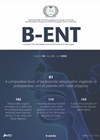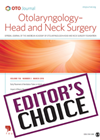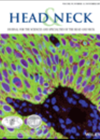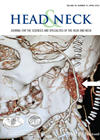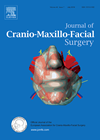
Journal Reviews
PET-CT for malignant nasopharyngeal lesions
This retrospective Turkish review of 92 patients aimed to determine the ability of fluorine 18-fluorodeoxyglucose (FDG) maximum standardised uptake value (SUVmax) on positron emission tomography/computerised tomography (PET/CT) to differentiate benign processes and malignant nasopharyngeal lesions. The authors retrospectively reviewed the...
What to do with incidental findings on FDG PET/CT?
18F-fluoro-deoxy-glucose positron emission tomography/computed tomography (FDG PET/CT) is commonly used in head and neck cancer staging. This investigation frequently identifies incidental findings unrelated to the index head and neck cancer. To assess the nature of these incidental findings, notes of...
The role of imaging in differentiating rare temporal bone neoplasms
This paper provides a useful tool to assist in determining the diagnosis of benign neoplasms of the temporal bone using readily available imaging modalities. Specifically, this group have looked at chondrosarcoma, an expansile hypermetabolic mass lesion usually found in the...
Best timing for post-treatment PET-CT scans in head and neck cancer
Unfortunately we know that the recurrence rate for head and neck cancer can be high, up to 30-50% in some series. These recurrences tend to occur within the first two years following treatment. Optimal surveillance strategies to detect recurrences early...
Postop follow up of oral squamous cell carcinoma: a new protocol
Oral and oropharyngeal cancers together are the sixth most common malignancy in the world, with an increasing incidence of oral squamous cell carcinoma (OSCC). The recurrence rate of OSCC is reported to be approximately 10-26%. About two-thirds of all recurrent...

